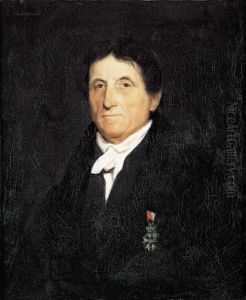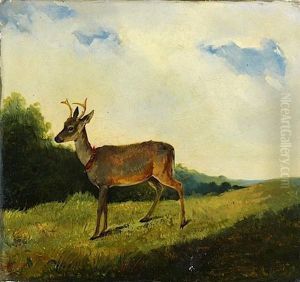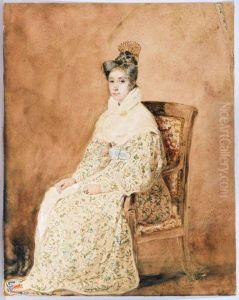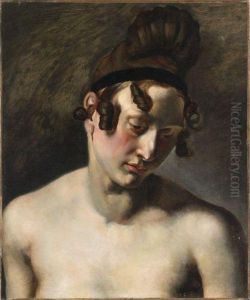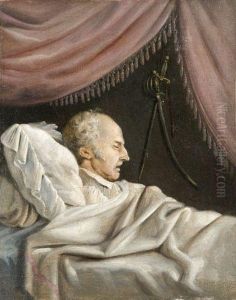Charles Emile De Callande Champmartin Paintings
Charles Émile de Callande de Champmartin was a French painter born on July 26, 1797, in Mâcon, France. He was known for his historical scenes, portraits, and Orientalist subjects. Champmartin began his artistic education in Lyon before moving to Paris to study at the École des Beaux-Arts under the guidance of renowned history painter Pierre-Narcisse Guérin. His early career was marked by the production of historical and mythological scenes, which were popular genres in the early 19th century.
Champmartin's work was recognized and appreciated during his lifetime; he regularly exhibited his paintings at the prestigious Paris Salon from 1824 to 1870. His paintings reflected a romantic sensibility, which was in vogue during the era, characterized by an emphasis on emotion and exoticism. One of his most famous works, 'The Death of Atala' (1824), exemplifies this romantic influence and is based on the novella 'Atala' by François-René de Chateaubriand.
In 1828, Champmartin embarked on a journey to the Middle East, which profoundly influenced his artistic direction. He spent several years in countries such as Turkey, Egypt, and Syria. The experience inspired him to produce a series of Orientalist paintings, which depicted the landscapes, people, and customs he encountered. These works were well-received in France, contributing to the 19th-century European fascination with Orientalism.
Champmartin's Orientalist paintings are notable for their attention to detail and use of light, which he employed to capture the ambiance of the scenes he witnessed. His works from this period include 'The Bazaar of the Silk Mercers, Cairo' (1833) and 'The Druze Chiefs of Lebanon' (1843), both of which display his skill in rendering textures and capturing the nuances of different cultural environments.
In his later years, Champmartin continued to paint, though his output and public visibility diminished. He passed away on June 2, 1883, in Paris. Although he is less known today compared to some of his contemporaries, his work remains an important part of the Orientalist movement in French painting and provides valuable insight into the romantic and exotic imaginations of 19th-century Europe. Champmartin's paintings can be found in various museum collections, including the Louvre in Paris and other regional museums throughout France.

